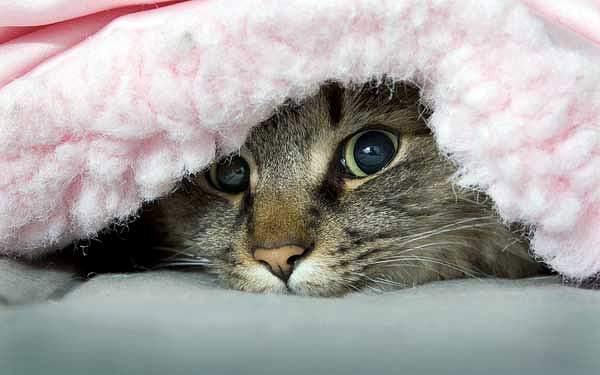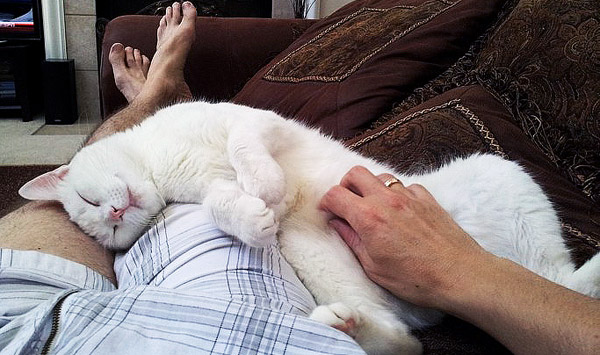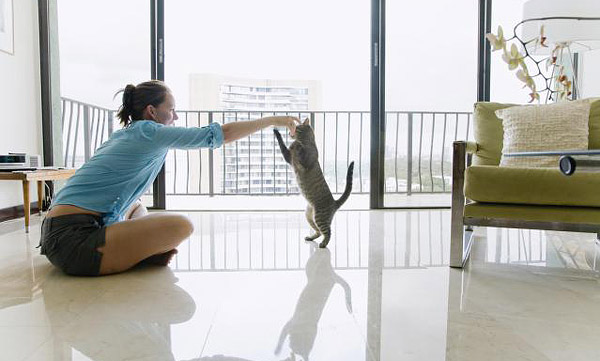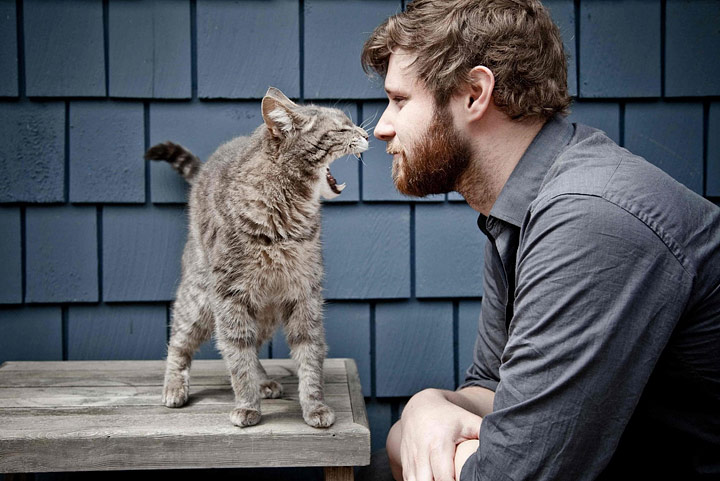
We love our cats and consider them family. “Cute” cat videos go viral in minutes. Your cat may not think our human behavior is always so cute, yet we expect our cats to adjust to our crazy human environment. As responsible pet parents, it’s important for us to understand their world. Pay careful attention to your cat’s reactions to the following human behaviors:
1. Not Providing A Safe Hiding Space
When the doorbell rings, dogs usually think it’s the most exciting part of their day. Cats sometimes run and hide under the bed or sofa. Cats require consistency in their environment. Most don’t like change. Allow them to resort to behavior that is comforting for them when anything new appears in their environment.
2. Ignoring Loud Noises
Change in the cat’s physical environment—strangers, different food, additional animals, loud noises, illness, etc.—is a major contributor to stress, which frequently leads to disease. Cats prefer their homes to be stable and consistent. Acute feline stress turns into chronic irritation, manifesting in disease and behavioral challenges. Try to minimize obtrusive sounds by taking a sonic inventory and lowering the volume on household appliances and other sounds you can control, including the television, radio and computer. Even moving her food bowl away from a noisy appliance can make a difference in her eating habits.
3. Giving Them Tummy Rubs
My dogs love their tummy rubs and beg for them. However, the stomach is a cat’s most vulnerable area and many go into predatory mode when people try and rub their tummies. I’ve had my hand scratched enough times to know I should stay away from this area altogether, particularly with a cat I don’t know well. Of course there are exceptions. Observe your cat’s body language and notice if she is tense or like jello.
4. Hugging Them
Some cats love being hugged. Others don’t. Veterinarian Rebecca Jackson advised Pet360 readers to follow their cats body language. If he tries to get away, just let him. If he crawls towards you purring loudly and melts in your arms when you pick him up, he’ll be just as happy being held as you are hugging him.
5. Petting Them Aggressively
Some cats like to be pet, others don’t. Let your cat take the lead. Place your hand by your side, and see if Fluffy comes to you. Most cats don’t like it when you reach to them and then pet them too fast and rough. Watch your cat’s behavior. She’ll let you know how much and how gentle she prefers to be pet. If she wants to move away from you, let her.
6. Treating Fluffy Like Fido or A Baby
While cats may be the size of puppies and babies, they are still cats. Not all of them like constant attention. Most don’t prefer to be chased around and picked up, then held tight. Observe your cat’s behavior. Let her greet you when you come home. She’ll let you know when she wants attention. Her meows and rubs against your legs will give you a clue.
7. Lack of Play Time
If you have an indoor cat, she isn’t able to use all of her hunting instincts. But, you can still encourage them inside. Schedule playtime together daily. Use a toy for her to chase and hunt, and sometimes let her catch her prey. It will nurture your relationship and you’ll quickly discover that the playtime benefits you as much as her.
8. Dropping Him Off at a Shelter
When we choose to be a pet-parent, it isn’t a part-time job with an end date. It means forever. If your cat is demonstrating behavior problems, consult with your veterinarian and/or a cat behaviorist. If you are having financial problems, there are organizations that can help with Fluffy’s veterinary care. If you make a trip to your local shelter, be a volunteer, not a death sentence for your cat.









Leave a Reply